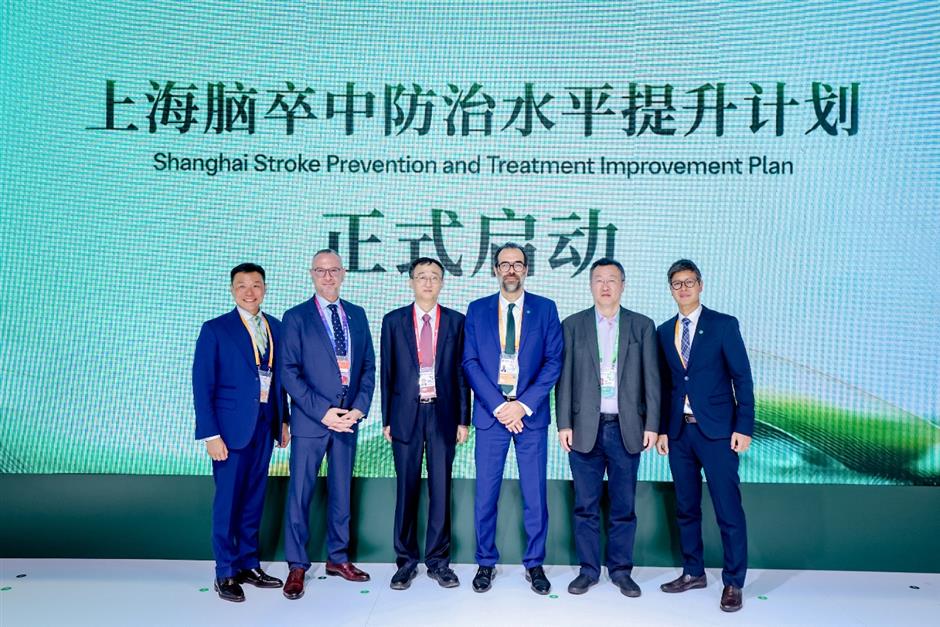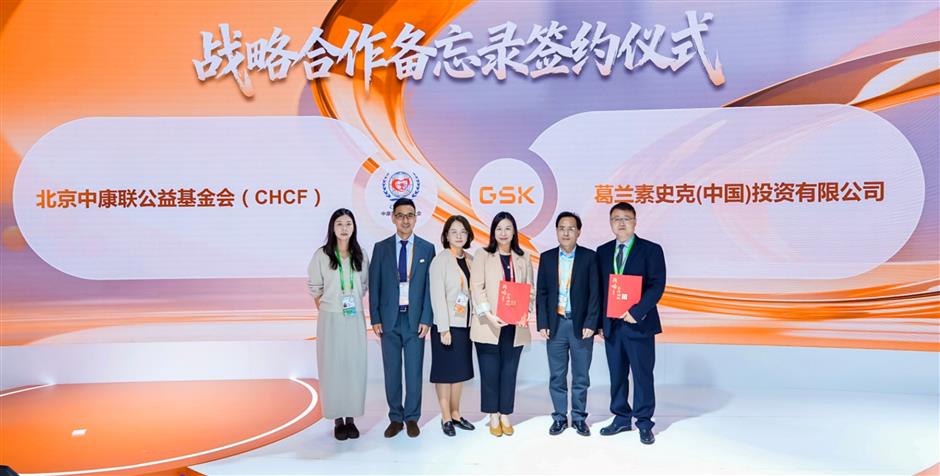Cutting-edge Devices, Drugs and Health Programs Spotlight Disease Prevention at CIIE
High-end medical equipment, breakthrough medicines, and new public health education initiatives on infectious and chronic disease prevention are in the spotlight at this year's China International Import Expo (CIIE). Many of these innovations are already being used in Shanghai hospitals and health programs.
AI-powered Neurostimulator Integrates Brain-Computer Interface
Medtronic unveiled the Percept™ RC, the world's first fully rechargeable deep brain stimulation (DBS) system combining sensing, directionality, and advanced programming capabilities.
The compact dual-channel neurostimulator is also the first of its kind to integrate brain-computer interface (BCI) technology, enabling real-time brain activity monitoring to enhance precision and personalization in DBS therapy for Parkinson's disease.
The device, now approved in China, will soon see its first clinical adoption in leading hospitals, including several in Shanghai.

Infectious Disease Prevention and Control
1. HIV/AIDS – The World's First Long-term HIV Medicine
Gilead Sciences introduced lenacapavir, a twice-yearly injectable HIV-1 capsid inhibitor for pre-exposure prophylaxis (PrEP) in adults and adolescents weighing at least 35kg.
The medicine, approved earlier this year in Hainan's Bo'ao Lecheng International Medical Tourism Pilot Zone, has been administered to the first patient outside the United States – marking a global milestone.
Health experts said lenacapavir not only provides a new HIV prevention option but also accelerates China's HIV prevention and control strategy. Phase 3 trials showed that 99.9% of participants receiving lenacapavir remained HIV negative.

2. Shingles –– Integrating Immune Prevention into Chronic Disease Management
Sun Xiaodong, vice director of the Shanghai Center for Disease Control and Prevention, emphasized expanding immune prevention from infants to adults and seniors vulnerable to diseases such as shingles, flu, and pneumonia.
"Vaccination is the most effective public health tool and a bridge between disease treatment and prevention," Sun said.
GSK highlighted its contribution through Shingrix, its shingles vaccine now approved in China for adults aged 18 and older who are immunocompromised – an expansion from the previous indication for adults aged 50 and above.
This marks China's first vaccine approved for this high-risk population, extending shingles prevention from elderly management to a lifelong immunization strategy.
3. Hepatitis B – Toward Functional Cure
China is entering a new phase of combating hepatitis B, moving beyond viral suppression toward functional cure, defined by the sustained loss of hepatitis B surface antigen after treatment.
The Viral Hepatitis Action Plan (2025-2030) underscores innovation in treatment and drug development.
Dr Jia Jidong of Beijing Friendship Hospital noted that functional cure could reduce the risk of liver cancer by 76%.
However, the challenge remains significant: about 75 million people in China are infected with the hepatitis B virus, but only 3 million of the 17 million who need antiviral therapy have received it.

Comprehensive Disease Prevention and Control
1. Stroke – Shanghai Launches Prevention and Treatment Improvement Plan
With 4 million new stroke cases annually and 13 million patients nationwide, stroke is now China's leading cause of disability and death, costing over 193 billion yuan each year.
To tackle this, the Shanghai Medical Association has integrated stroke prevention into the city's new three-year health plan, aiming to make stroke preventable, controllable, and rehabilitable.
"Public awareness, uneven medical resources, and insufficient rehabilitation remain key challenges," said Dr Wang Xin, director of the association's neurology branch.
At the CIIE, a stroke prevention and treatment cooperation agreement was signed between the Shanghai Medical Association and Boehringer Ingelheim.

2. Multiple Myeloma – Strengthening Care for an Aging Population
As China's population ages, multiple myeloma, the nation's second most common blood cancer, has seen its incidence and mortality double over the past 30 years.
In 2020, there were 30,000 new cases and 19,000 deaths in China.
To improve diagnosis, treatment, and access to innovative therapies, GSK signed a memorandum of understanding with the China Health Charity Foundation at the CIIE to establish a full-cycle support network for patients, especially seniors.
Health Education Takes Center Stage at CIIE
China's National Health Commission recently issued a 2024–2027 action plan to enhance public health awareness, a topic actively discussed at the expo.
Experts emphasized that evidence-based health education–translating clinical findings into actionable public guidance–is key to managing chronic diseases such as cardiovascular and kidney disease, which affect over 400 million people nationwide.
"Health education extends healthcare services, builds trust, and strengthens self-management," said Dr Zhang Xianling of Shanghai No. 10 People's Hospital.
Shanghai, a pioneer in health legislation and policy, continues to integrate whole-life health management into its governance. At the CIIE, the city's health authorities leveraged livestreaming sessions and bilingual educational materials to promote awareness on topics from mental health to balanced nutrition.
From innovative devices and medicines to integrated health strategies and education, this year's CIIE underscores China's determination to build a smarter, more resilient public health system–one where prevention, precision, and patient-centered care go hand in hand.




In Case You Missed It...








